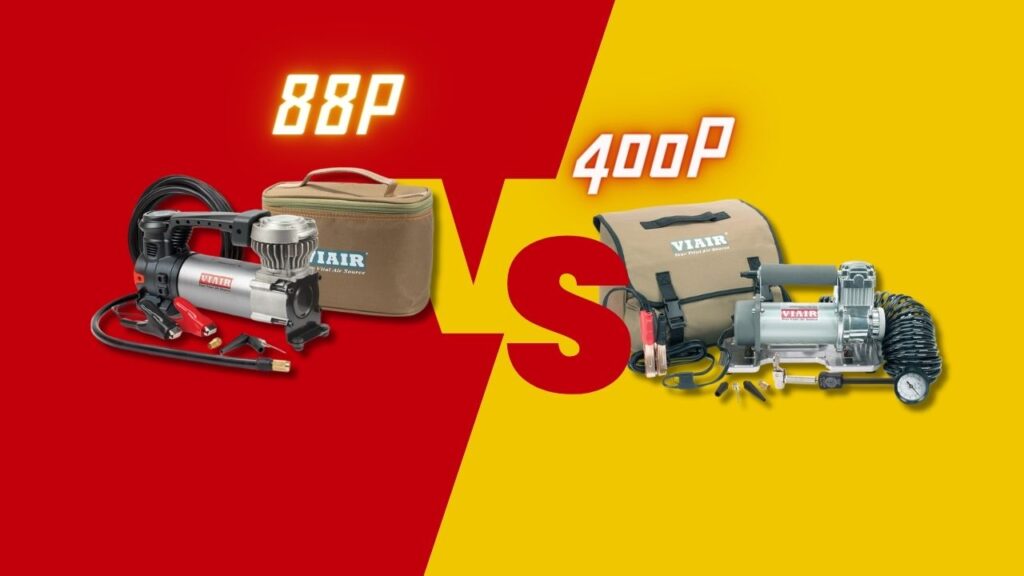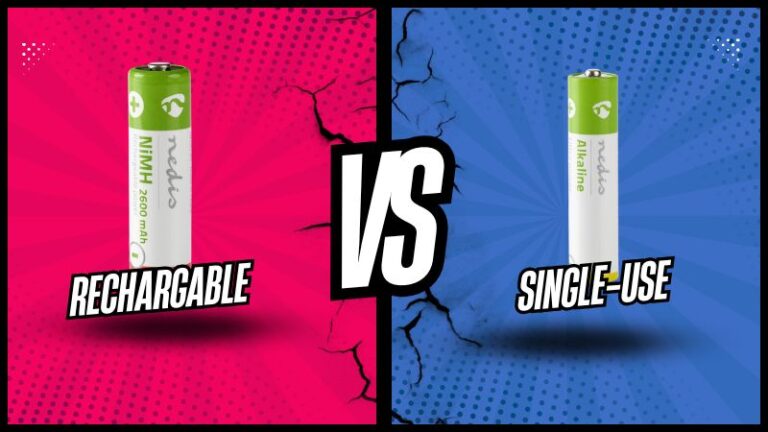The world of portable air compressors is vast, and among the top contenders in the arena are the Viair 88P and the Viair 400P. Both of these compressors hail from the renowned Viair brand, known for its consistent delivery of high-quality products. However, the 88P and the 400P cater to different segments of users, each with its unique set of offerings. This comprehensive comparison will guide you through their shared strengths, distinct characteristics, and a pros and cons list, ensuring that your purchase decision is well-informed and aligned with your requirements.
The Viair 88P and 400P, despite their distinct specifications and target audiences, are united by the undeniable stamp of Viair quality. Let’s delve deeper into the common fabric that weaves them together and underscores their shared reputation in the market.
Consistent Build Quality
One of the cornerstone attributes that both these compressors boast is their robust construction. Viair has consistently championed the cause of durable and reliable equipment, and both these models exemplify that commitment. With sturdy metal components and reinforced designs, they promise a prolonged lifespan, even under rigorous usage.
Direct and Uninterrupted Power Connection
Understanding the need for unwavering power, especially in remote or critical scenarios, both the 88P and 400P come equipped with direct battery clamps. This ensures not only a consistent power supply but also eliminates the frequent interruptions that might arise with less stable connections.
Precision-Meets-User-Friendliness
While high-end technical specifications are essential, real-world utility often hinges on user-friendly features. Both these models house precision pressure gauges, which are designed to be easily readable. This design aspect ensures that even a novice can monitor and maintain desired pressure levels without any hassles.
Safety in Visibility
When you’re stranded on a deserted road or working late into the evening, the integrated LED or power indicators on these compressors can be real lifesavers. These features, while seemingly simple, accentuate safety and ease of operation in low-light conditions, ensuring that users aren’t left fumbling in the dark.
Efficient Heat Management
Both the 88P and 400P recognize the innate challenges posed by overheating – a common issue with air compressors. To counteract this, they’re embedded with reliable thermal overload protectors. This proactive heat management not only safeguards the equipment but also prolongs its operational life.
Versatility in Application
The Viair brand understands that air compressors are often required in varied scenarios – from inflating vehicle tires to air mattresses during camping trips. Keeping this versatility in mind, both the 88P and 400P have been designed to cater to a range of inflation needs, making them invaluable assets in diverse settings.
Noise Management
A common grievance with air compressors is their noise output. Viair, being attuned to user feedback, has ensured that both these models have optimized noise levels. This design approach ensures that users can operate the compressors without causing significant disturbances, especially in quieter surroundings.
Distinct Characteristics: Drawing the Line
The Viair 88P and 400P, although siblings under the Viair brand, showcase unique characteristics tailored to different user requirements and environments. Exploring these differences becomes pivotal for potential buyers aiming for a fit that feels almost custom-made for their specific needs.
Performance Benchmarks and Efficiency
At the forefront of the distinction is their performance caliber. The 400P is designed to be a more potent force in the Viair lineup, offering a superior CFM (Cubic Feet per Minute) output. This makes it an apt choice for tasks that demand rapid inflation or require the versatility to power certain pneumatic tools. On the other side, the 88P, while effective, aligns more with moderate tasks, offering efficiency without the added power of the 400P.
Operational Stamina and Resilience
Duty cycles — or the duration a compressor can run before needing a cooldown break — vary between these models. The 400P stands out with its impressive duty cycle, primed for longer operations and demanding tasks. The 88P, in contrast, offers a respectable yet shorter cycle, catering to less intense, intermittent uses.
Design Philosophy: Compactness vs. Comprehensive Power
The very silhouette of the two models speaks volumes about their intended audience. The 88P is a nod to the users valuing compactness, simplicity, and portability. Its design ensures hassle-free transport, making it ideal for occasional users or those with space constraints. The 400P, while still portable, leans more towards the side of raw power and extended capabilities, evident in its slightly more substantial design.
Accessory Ecosystem and Adaptability
The world of air compressors isn’t just about the main unit but also about the accessories that amplify their utility. The 400P, with its broader operational scope, generally comes equipped with a more expansive accessory kit. This might include extended air hoses, diverse inflation tips, or even adaptors. The 88P, in keeping with its simplified approach, offers a more streamlined set, focusing on the essentials without overwhelming the user.
Power Dynamics and Energy Consumption
Higher performance often comes hand-in-hand with greater power requirements. The 400P, given its enhanced capabilities, necessitates a more robust power source to tap into its full potential. The 88P, tailored for lighter tasks, operates efficiently even with less energy, ensuring power conservation.
User Interface and Operational Ease
Both models prioritize user-friendliness, but subtle differences emerge upon closer inspection. The 88P, given its target audience of casual or first-time users, might feature a more intuitive interface, with straightforward controls. The 400P, catering to seasoned users or professionals, may offer more granular control options, allowing for greater customization of its operations.
Durability and Environmental Adaptability
While both models are robustly built, the 400P, designed for more intensive tasks, might feature additional reinforcements, making it better suited for rugged terrains or challenging environmental conditions. The 88P, being a more basic model, offers durability within standard operational parameters.
Pros and Cons
Viair 88P:
- Pros: Compact and lightweight, direct battery connection, suitable for light to moderate tasks, cost-effective.
- Cons: Lower CFM compared to 400P, might not be ideal for heavy-duty tasks, shorter duty cycle.
Viair 400P:
- Pros: High CFM output, longer duty cycle, versatile accessory kit, suitable for rigorous tasks and larger vehicles.
- Cons: Slightly bulkier, may require a stronger power source, might be overkill for casual users.
In Conclusion
When choosing between the Viair 88P and the 400P, it boils down to individual needs. If you’re seeking a compact, efficient compressor for occasional use or smaller vehicles, the 88P stands out. However, if your endeavors demand a powerhouse that can handle extended, rigorous tasks, the 400P is the clear winner.
Both these models represent Viair’s commitment to quality, performance, and user satisfaction. By aligning your specific requirements with the strengths of these compressors, you’re bound to find a reliable companion for your inflation needs.




